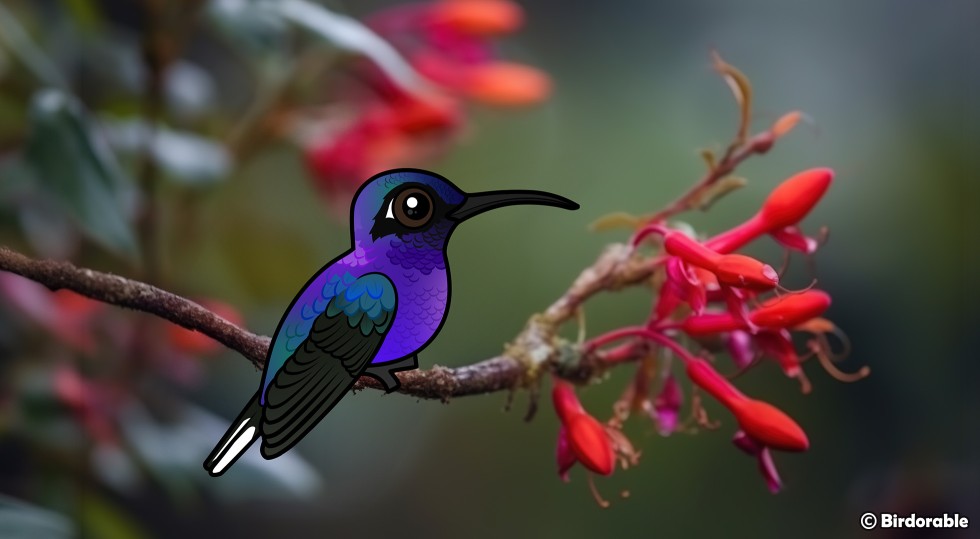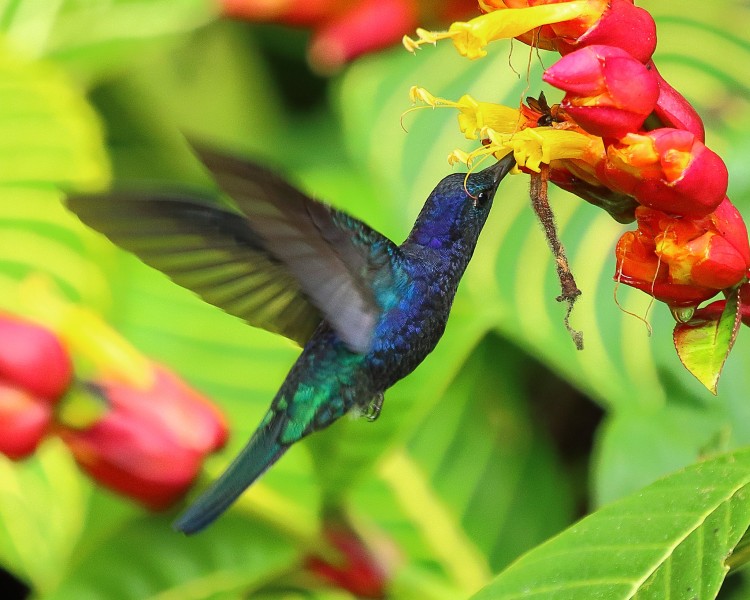Hummingbird Week 2024
Meet the Magnificent Violet Sabrewing Hummingbird

Our Birdorable Hummingbird Week 2024 continues today with a new species added to our flock: it's the Violet Sabrewing!
The Violet Sabrewing is one of the largest and most stunning hummingbirds in the Americas. This vibrant bird is a spectacle with its iridescent plumage and dynamic behavior. Found primarily in the tropical regions of Central America, the Violet Sabrewing captures the fascination of bird enthusiasts with its striking appearance and unique characteristics.
One of the most distinctive feature of the Violet Sabrewing is its vivid plumage. Adult males are particularly striking with their deep violet-blue feathers covering most of their bodies. They have a distinctive white spot behind their eyes and a curved bill that is adapted to feed on nectar. Females are slightly less colorful, with green upperparts and a mix of violet and white on their underparts. This sexual dimorphism is typical in many hummingbird species and plays a significant role in their mating rituals.

Violet Sabrewing by ryanacandee (CC BY 2.0)
One of the most fascinating aspects of the Violet Sabrewing is its size. This bird is big -- for a hummingbird! It is one of the largest species of hummingbirds, measuring up to 5.9 inches (nearly 15cm) in length. Even at this size, they're still hummers, and these hummingbirds are incredibly agile and can perform impressive aerial maneuvers. Their powerful wings allow them to hover in place while feeding and even fly backward, showcasing their remarkable flight capabilities.
The diet of the Violet Sabrewing is primarily composed of nectar from a variety of flowering plants. They have a preference for flowers with long corollas, which match their long, curved bills. In addition to nectar, they also consume small insects and spiders, which provide essential proteins, especially during the breeding season. This diet helps sustain their high energy levels and supports that active hummingbird lifestyle!
Violet Sabrewings are typically found in humid tropical forests, often at elevations ranging from 1,600 - 6,600 feet (500 to 2,000 meters). They prefer habitats with abundant flowering plants, naturally, which provide a consistent food source for these nectar-lovers. These hummingbirds are also known to visit gardens and feeders, where they can be observed up close, much to the delight of bird watchers.
The conservation status of the Violet Sabrewing is currently classified as "Least Concern" by the International Union for Conservation of Nature (IUCN), though the population is thought to be decreasing. Habitat loss due to deforestation and human encroachment poses a significant threat to their population, which is currently large and widely distributed.
The Violet Sabrewing hummingbird joins our avian family and becomes our 798th Birdorable bird! Tune in tomorrow as we wrap up Hummingbird Week (and reveal one more new hummer!).












Comments
Leave a comment
Thank you!